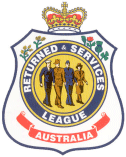
FAQs
Here you’ll find answers to frequently asked questions about RSL NSW. If you have a question that isn’t answered here, you can contact us for assistance via the enquiry form.
RSL NSW does not own or operate any registered clubs, nor does it own or operate poker machine licences. It does not benefit from the sale of alcohol or gambling.
RSL NSW is a charity. RSL sub-Branches often hold meetings at local registered clubs which are separate legal entities.
No. The Art Union is operated by RSL Queensland and all proceeds remain with RSL Queensland to support veterans and their families.
RSL Australia enters into partnerships with various commercial organisations. Refer to the RSL Australia website for details on any national partnerships.

The wattle is symbolic of Australia.
The leek, the rose, the thistle, and the shamrock are symbolic of and represent the link with Wales, England, Scotland and Ireland respectively.
The badge is a symbol of a readiness at all time to render service to Queen and country and to former comrades. It is a time-honoured emblem – one that has been worn with a deep sense of pride by the most revered in our land and one that glorifies the forms of dress of all privileged to wear it.
No wealth or influence can purchase the badge which may be worn only by those who have served their country.
Your attention is drawn to the three colours in the badge. The red represents the blood tie of war. White stands for the purity of motive in joining the League – to render service without thought of personal gain or ambition. The blue indicates willingness to render that service to a comrade anywhere under the blue sky – wherever they may be.
Depicted in the centre of the badge, and encircled by the name of the organisation, you will see a sailor, soldier, airman and servicewoman marching together with their arms linked in friendship. This is to show within the circle of the League, all services and all ranks, march together in unity and comradeship.
The motto is: ‘The Price of Liberty is Eternal Vigilance’
In the Fourth Century BC, the Greek military leader and Athenian Orator Demosthenes said in comment on the activities of the neighbouring kingdom of Philip of Macedonia:
‘There is one safeguard known generally to the wise, which is an advantage and security to all, but especially to democracies as against despots. What is it? Distrust?’
Over 2000 years later, in 1790, John Philpot Curran said in his speech upon election as Lord Mayor of Dublin, Ireland:
‘The condition upon which God hath given liberty to man is eternal vigilance’
Some sixty years after this speech, Wendell Phillips said in an address before the Massachusetts Anti-Slavery Society in 1852:
‘Eternal vigilance is the price of liberty’
The words have also been attributed to Thomas Jefferson but no one has yet found any records of Jefferson using the sentence.
In the early 1920s the Victorian Branch of the League suggested that the League should have a motto and the New South Wales Branch subsequently recommended the words:
‘The price of liberty is eternal vigilance’
It is not known how the New South Wales Branch came to suggest this motto, whether they adapted the historical quotes or whether it was an original idea. However, in November 1923, the 8th National Congress of the RSL agreed upon the motto as it now stands. It is as relevant today as the spirit of the thoughts expressed by Demosthenes so long ago.